I stayed in Ethiopia for three months last year and of course I took time to discover a bit. It is a beautiful country but I only had so much time, which I tried to make the best use of. Visit Ethiopia with me through this post...
Addis Ababa is the capital of the country. The capital is at an altitude of 2,355m above sea level
- Amharic is the official language and there are 10 regions in the country. Each region has its own language
- The population of Ethiopia is about 113 million
- The Orthodox Church is super strong there
- The country is GMT+3 (2 hours ahead of Nigeria)
Addis Ababa is not one of those cities you could call beautiful. A
round the city, you'll notice that construction is constantly ongoing. There seem to be as many uncompleted buildings as there are completed ones. I was told that instead of keeping the cash or stashing it away in the bank, people would rather put it into property. Another reason was, the city is growing so they need more buildings.I saw a number of homeless people, I'd not seen that many sleeping on the streets in an African country before. It was a bit of a shock.
I saw Volkswagen bettles, a lot of them moving on the streets. I took a few photos and shared with my dad. I remember we had a yellow one growing up 🙂
Taxi drivers mentioned that it is expensive to import. A good number of the cars I saw were old model cars. The most popular cars around Addis Ababa were Toyota vitz and Toyota yaris.
To get around, the taxi services that were recommended to me were Ride (Uber equivalent), Zay ride and Ze-Lucy Meter Taxi. I used Ride a lot. However, finding drivers who spoke English was a bit of a challenge, so each time I found a driver with whom I could communicate, I saved his number. I had about 7 or more numbers saved.
There is a lot traffic in Addis, I remember spending nearly an hour at one spot on a Sunday.
You might have an international driver's license but you can't drive with it. You'll have to get a local one and the process takes up to 3 months. Something about your national license being authenticated by your country before they process etc.
There is only one phone network, I guess so that things can remain regulated, but who knows. It gets shut down from time to time when major events happen.
Art work and leather goods are things you'll find a lot of in Addis Ababa. The leather products are good and so very affordable. See some from my collection below.
In this photo, I was getting a mini lecture from an artist.
People/things are slooowww, you'll need lots of patience to survive. People will say ok even when they have no intention of doing something or they will argue like kilode! You may get frustrated trying to insist, because they'll do as they wish.
Ethiopians describe themselves as proud. They would refer to other Africans as Africans, not sure what continent they've placed themselves on. It comes across like they would make little effort to speak English, whereas, Amharic is spoken only two countries in the world. They have their own calendar which can be confusing. You have to learn how they read time, dates or always tell them to do so in the normal world calendar during your communication, then they calculate it. Last year they were in 2013, if my memory serves me well. It is a peculiar country.
Cultural dance displays - Ethiopians are very proud of their culture and celebrate it on a daily basis. I find that admirable. The dances are eclectic and full of energy. Some of the moves, I would never attempt, they are strictly for professionals. I have lots of videos.
 |
Dance display at Totot
|
 |
Dance display at Totot
|
Although our culture/ethnicity is usually something to celebrate, it is also the very thing that creates a divide and causes such conflict that I'll never understand. Including in Ethiopia.
 |
Bayo and I at Fendika
|
At certain restaurants, they display their dances in numerous colourful attires. They change outfits several times and they do it so quickly. Two popular places I visited that are great to eat and watch these shows are Totot traditional restaurant and Fendika.
Food - Ethiopians love their injera! It is a sour fermented, spongy flat bread, made from teff flour. I think teff is unique to Ethiopia and Eritrea.
 |
| Different types of injera |
 |
| Tibs (meat in sauce) |
If you aren't a fan on injera, they would serve bread as an option.
 |
| Shekela tibs (dry grilled meat) |
 |
| More shekel tibs |
 |
| Injera and spinach |
Injera, shiro (chick peas prepared as a sauce) and a tomato sauce served in the photo above and how it is eaten in the photo below.
They can eat injera all day, every day!. I ate it with different forms of meat, chick peas, ground beans, tomato sauce etc.
 |
| Injera and tegamino |
Tegamino is also made from chick peas but is thicker than shiro.
In the photo above, there is a variety of things and sauces including eggs, cooked and raw meat. We were unable to go through with eating the raw meat and ending up asking them to steam it for us.
It's not uncommon to see people feeding each other. I watched with fascination the first time I saw this. We were seated behind 3 couples, the youngest woman filled her hand with injera and meat, then stretched over to the oldest man to feed him, who was clearly not her husband. Then I saw the feeding going around the couples.
I was told that it's normal, a way of showing affection and it is impolite to refuse. So I was warned that if I hung out long enough with Ethiopians, it wouldn't be long before someone would stretch over to feed me.
I even heard that children are laid on injera before baptism 🙈 I have no way of knowing if this is true.
Then coffee...if you are a coffee lover, this is a place to be! There is a whole ceremony of roasting the coffee beans then preparing it all to the final stage. They also burn incense while the coffee is being prepared. In the photo above, you can see the incense smoke coming towards me. I hear the coffee is quite strong and good. I don't drink coffee, so I wouldn't know. Coffee is part of the ritual, they have some after meals and it is equally as important as the meal.
I had fuul which is ground beans, it could be quite spicy. Fried eggs, tomatoes and yoghurt are added onto it. I opted to have it without yoghurt. I loved the local bread in the photo, it is unleavened and I left Tigray with a stash of it.
 |
| Tihlo |
I also tried Tihlo which is native to the Tigray region. It is made from barley, rolled into small balls, eaten with meat and this sauce. The person who serves stays and keeps making the barley balls while you eat. They are eaten with the sticks, I was a natural and they were impressed.
I discovered cactus, I had always known the plant but didn't realise it produced fruit. This was a rather interesting discovery.
Churches - There are churches all over, on hills, in the most random places. The Orthodox Church is very popular. When the practising ones pass by a church, they would do the sign of the cross three times. To get from point A to B, they could do the sign a few times without fail.

I also saw people kiss the walls of the churches. Or there could be a person who is dressed like an ancient priest with a big cross, they would kiss the cross. They always look so pious when they carry out this act.
I heard a lot of chanting from the Orthodox Church and it could go on and on.
By the way, the Catholic Church, Protestant Church and Islam are present but the Orthodox Church stood out to me...maybe because it's something I'm not used to.
People talked of fasting a lot, but I saw them eating. I asked a few of my colleagues who explained that it meant they were not to eat meat or dairy products. I asked why, none of them could say why exactly, but that their priest told them so. The fasting happens for a good part of the year. Here I was thinking Nigeria was leading with people "carrying religion on their heads". But in Ethiopia, it was on another level.
I attended an early service at an Orthodox church and it was a beautiful view with everyone dressed in white.
We stood through the service while blessings were recited (I guess as it was all in the local language), so I didn't understand anything. At some point, everyone sang and it was pure. There is just something about music.
One woman behind us was on her knees with her head to the ground, she was in that position for such a long time, at some point I whispered a prayer to God on her behalf, asking him to please hear her prayer.
Unity Park - This was the first place I visited the weekend I arrived, thanks to a friend's recommendation. It is a beautiful place and is well thought out, a must do if you visit Addis. The place is a mix of fun and history. I was quite impressed with how well history was documented and preserved. Some parts were pleasant, and some not so much.
 |
| Esther looking down from the palace entrance | | |
 |
| Haile Selassie's car |
 |
| Haile Selassie on his throne |
 |
| There was soooo much to read. It was very informative. There was even information about King Solomon. |
 |
Menelik on his throne |
There was a lot to see, read and listen to. In one part of the building, we listened to a story of a survivor of such cruelty. His story was so sad and moving. All this happened in a dungeon that was once a wine cellar, that was striking! The wine cellar became a detention place where so many atrocities were committed. A good part of the story happened in this dungeon.
 |
| The walk way into the wine cellar |
 |
| Esther and I listening to a survivor's moving story |
Unity park also has a zoo, was nice to see the animals.
The final part of the park we saw was a display of the regions of Ethiopia.
I was quite pleased with my visit that day, we ended up spending about 3 hours.
Entry fee = $20 for foreigners.
National Museum of Ethiopia - The national museum of Ethiopia holds the history of Lucy! The taxi driver called the place Lucy, my friend thought that was the name of the area, but I knew what he was referring to 🙂
Lucy's bones were found in 1974 in Ethiopia. The theory is that she represents the evolution of human kind. Her skeleton and the remains of her bones are on display in the museum. If you are a history buff, there are things that would pique your interest on human evolution and Ethiopias history.
 |
| Ada and one of our history finds |
 |
| Lucy's skeleton |
 |
| This was in the garden but there was no one we could ask what the story behind was |
 |
| The National museum garden |
There is a variety of options for restaurants in Addis Ababa and there are other things to do. Knowing the right crowd is key, especially with the language barrier. I visited a number of restaurants (local, Indian, Korean, continental etc) but cannot capture everything in this post.
Trips outside Addis Ababa:
Entoto Park - Entoto park, located on Mount Entoto, takes up about 50 hectares in the forests around Addis Ababa. It is about 20km from Addis Ababa, but took us an hour and 20 minutes to get there because we ran into some traffic.
The park is at an altitude of 2600 to 3200 metres, and has 10km of roadway for cycling, and 13km for hiking.
This multi-purpose park contains indoor and outdoor facilities built mostly with local material. The park includes centres for physical activities, a spa, tented lodging, a horse stable, a library, restaurants and coffee shops, fountains, walkways, bicycle and scooter lanes.
We wandered around for a bit but couldn't stay as long as we would have liked. This place is definitely a good spot for a weekend get away. We did a day trip.
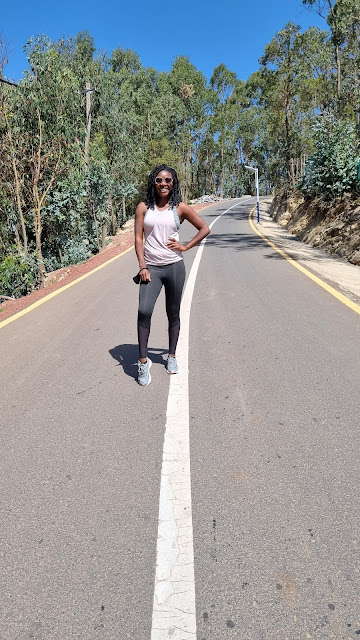 |
| The walk way |
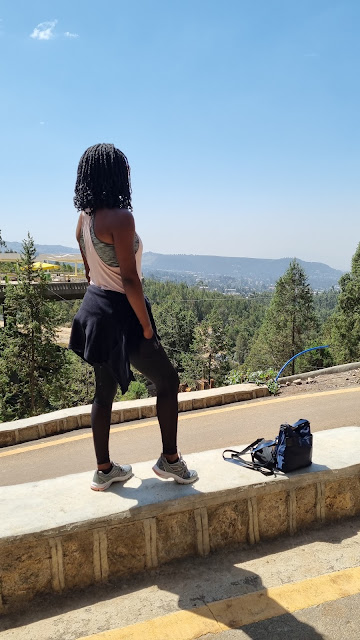 |
| Overlooking Addis Ababa |
 |
| These love signs were on the way out |
Bishoftu : My friend visited so we went to Bishoftu, in the Oromia region, about 48km and an hour from Addis Ababa.
The catch for us was the view overlooking lakes. Although it was winter when we visited and the visibility was low, with fog, we still had some great views.
We found Lake Bishoftu resort, the best thing about the place was the view.
We also heard about Kuriftu resort which has a water park. Despite the cold temperature, we had to stop by 😉 we went on a number of rides.
We had a blast! Then of course had hot showers and lots of tea afterwards to warm up 😃
Tigray - Tigray is beautiful, mountainous, lush and the road network is great! Although it has been in the news for all the wrong reasons recently. When I was going there, I didn't know what to expect, but I was pleasantly surprised at how developed the place was.
 |
| The airport in the capital of Tigray - Mekelle |
From what I'd heard, the Tigrayans are hard workers and they developed their region.
The region controlled power in the country for a long time, they are well educated and made their materials like textile, glass and cobble stones which they exported. With the crisis, they lost power and the factories were destroyed (we saw some of the destroyed factories). Medical services in Tigray were advanced and functioned well, but all that seems to be in the past now as the medical facilities were pillaged and destroyed.
 Look at all this road network in the mountains.
Look at all this road network in the mountains.
There is much more to what we see and so much goes on behind the scenes, it's sad. The result of war/conflict is that innocent people suffer for causes they have no part in. People are slowly trying to rebuild their lives, but there is so much underlying tension and fear.
I was so impressed by the cobble stone streets. Although the factories got destroyed with the conflict, they said 'they will be built again', I found that people were very resilient and determined.
It's interesting how you note differences in different parts of countries. Horses are used to transport goods a lot in Tigray. It is normal to see horses with carts and people. We saw the same in Bishoftu.
In Tigray, the Adwa mountains represent a core part of history for Ethiopians. Italian troops came up from behind these mountains to try to take over the country to colonise them, but Ethiopian soldiers defeated them and thwarted their plans of colonialism.
 |
| Took this photo of the Adwa mountain from a moving car |
Ethiopia is one of the countries that was not colonised. The Ethiopians are very proud of this.
Holiday makers used to go hiking in different mountains in Tigray before the crisis.
On this day for work, we were trying to get to one village, but the only way to get there was by walking, so thanks to work, I went hiking in these mountains.
Two things that were on my list to do in Ethiopia which I didn't manage to do were 1) go to Lalibella...I've been meaning to go since 2014! If I had known how quickly the situation would change, I would have gone immediately I arrived. It was a trip I was saving to do at the end of my time in Ethiopia, but by the time I was leaving, it was a no go area.
2) I wanted to go to the church where the original ark of the covenant is. It is in Axum in the Tigray region. Work was to take me to Axum and I had hoped I would make a quick stop, but that was not meant to be...
Ethiopia is beautiful and definitely worth exploring.
~With the world being so unpredictable, this mantra comes more alive "live each day as if it were your last". You might be afraid to take certain leaps, do it afraid but do it anyway! ~



































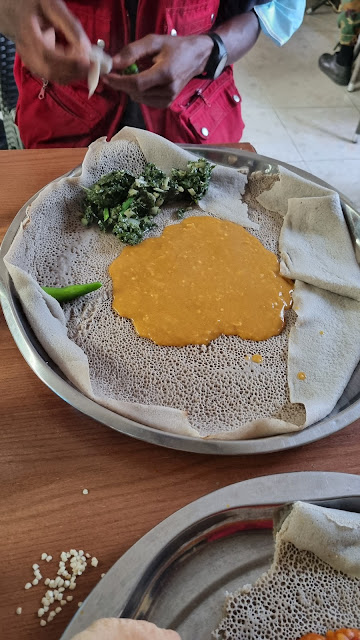

















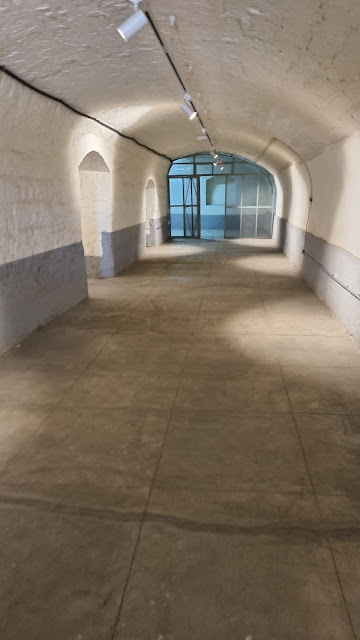
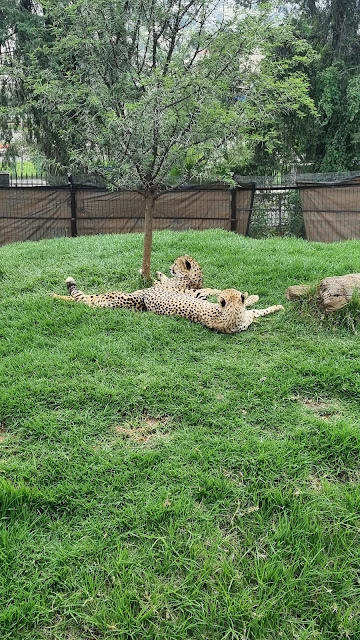









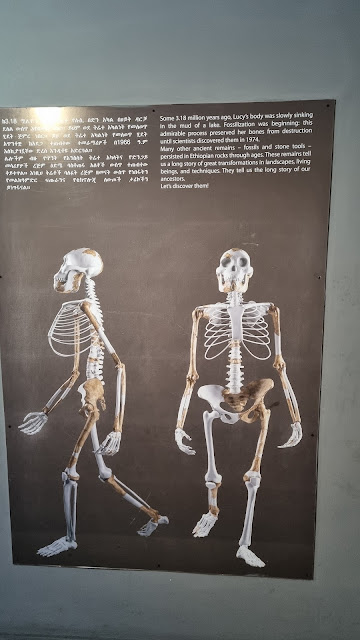
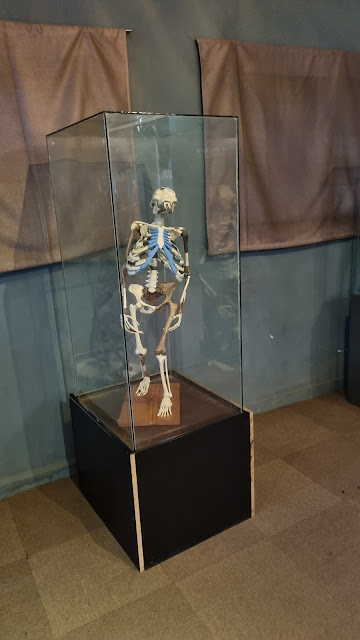



















The metal travel seems real with this detailed story on Ethiopia. I smiled all through the reading as there are many interesting discoveries with these indigenous people. Definitely are yet to snap to reality of 21 st century.
ReplyDeleteI'm glad mental travel put a smile on your face. In the times we are in, it is necessary.
DeleteA super photo journal Ene! Wonderful to see how you got on in Ethiopia with Injera, Lucy, Haile Selassie's car, so many churches, and all that fun and history in Unity Park. Including no colonial history. I can tell you had a brilliant time.
ReplyDeleteI sure did, thanks for reading Eddie.
DeleteFelt like a trip reading through. What a great experience ☺️
ReplyDeleteI'm glad you enjoyed reading it.
Delete